Cognitive aging in zebrafish
- PMID: 17183640
- PMCID: PMC1762370
- DOI: 10.1371/journal.pone.0000014
Cognitive aging in zebrafish
Abstract
Background: Age-related impairments in cognitive functions represent a growing clinical and social issue. Genetic and behavioral characterization of animal models can provide critical information on the intrinsic and environmental factors that determine the deterioration or preservation of cognitive abilities throughout life.
Methodology/principal findings: Behavior of wild-type, mutant and gamma-irradiated zebrafish (Danio rerio) was documented using image-analysis technique. Conditioned responses to spatial, visual and temporal cues were investigated in young, middle-aged and old animals. The results demonstrate that zebrafish aging is associated with changes in cognitive responses to emotionally positive and negative experiences, reduced generalization of adaptive associations, increased stereotypic and reduced exploratory behavior and altered temporal entrainment. Genetic upregulation of cholinergic transmission attenuates cognitive decline in middle-aged achesb55/+ mutants, compared to wild-type siblings. In contrast, the genotoxic stress of gamma-irradiation accelerates the onset of cognitive impairment in young zebrafish.
Conclusions/significance: These findings would allow the use of powerful molecular biological resources accumulated in the zebrafish field to address the mechanisms of cognitive senescence, and promote the search for therapeutic strategies which may attenuate age-related cognitive decline.
Conflict of interest statement
Figures
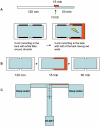
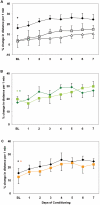


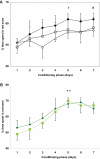



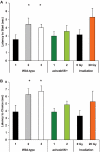

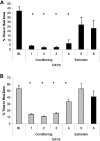

References
-
- Sarter M, Bruno JP. Developmental origins of the age-related decline in cortical cholinergic function and associated cognitive abilities. Neurobiol Aging. 2004;25((9)):1127–1139. - PubMed
-
- Craik FI, Bialystok E. Cognition through the lifespan: mechanisms of change. Trends Cogn Sci. 2006;10((3)):131–138. - PubMed
-
- Schaffitzel E, Hertweck M. Recent aging research in Caenorhabditis elegans. Exp Gerontol. 2006;41((6)):557–63. - PubMed
-
- Peters A. The effects of normal aging on myelin and nerve fibers: a review. J Neurocytol. 2002;31((8–9)):581–593. - PubMed
-
- Gerhard GS. Comparative aspects of zebrafish (Danio rerio) as a model for aging research. Exp Gerontol. 2003;38((11–12)):1333–1341. - PubMed
Publication types
MeSH terms
Substances
Grants and funding
LinkOut - more resources
Full Text Sources
Medical
Molecular Biology Databases

